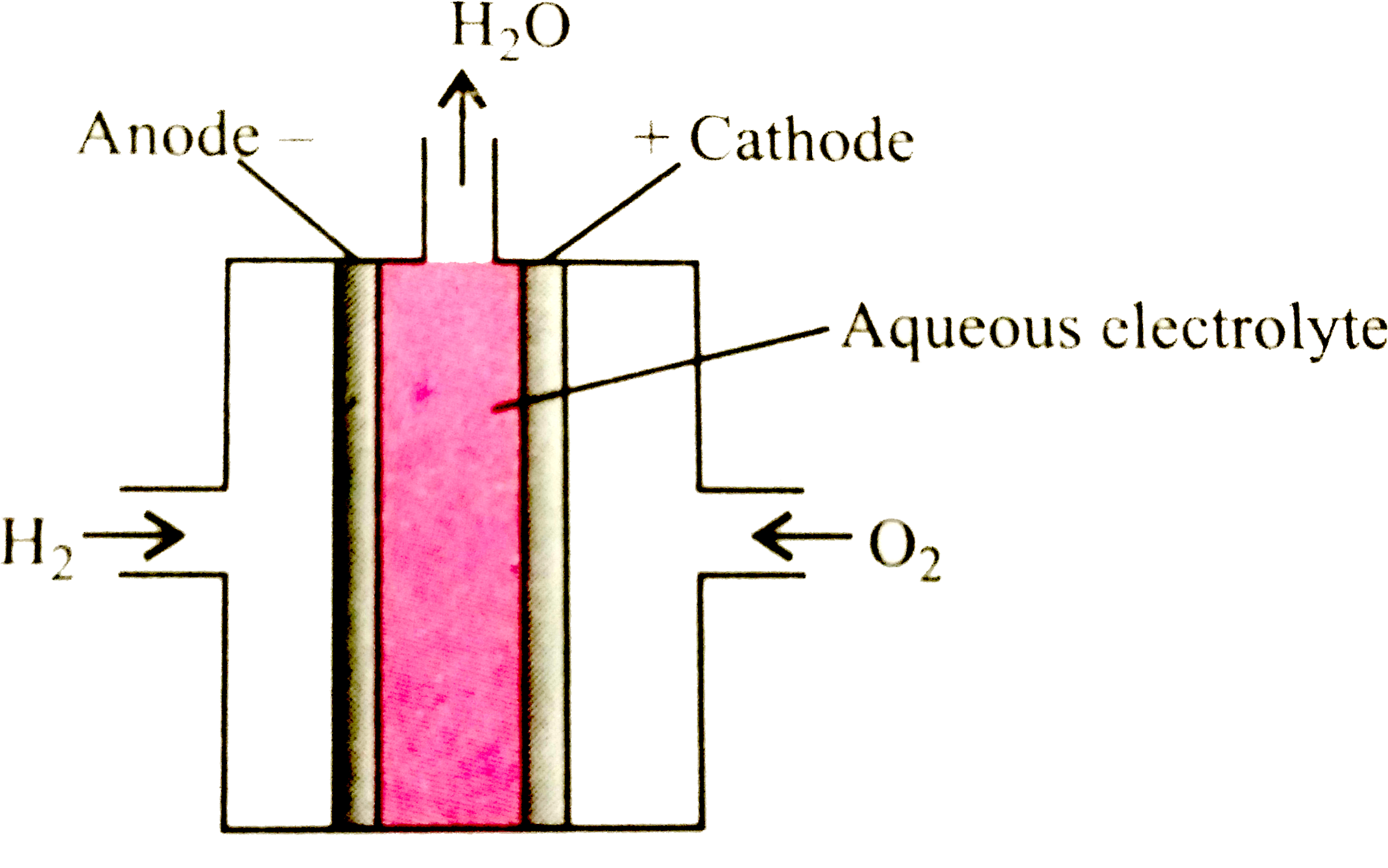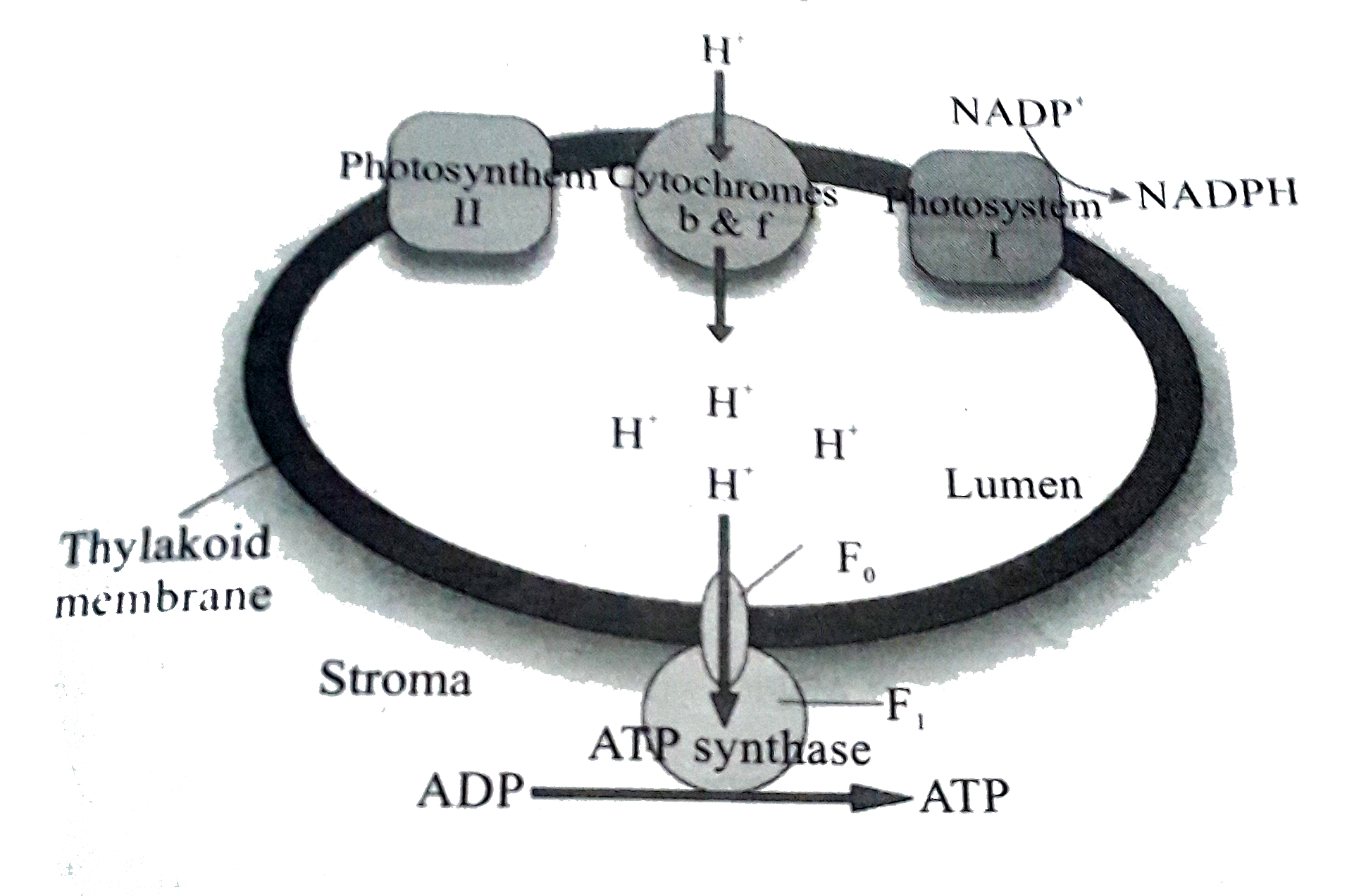Fill in the blanks by choosing the correct option regarding chemiosmosis. "F_0 of ATPase enzyme forms a/an ____(i)_____ that carries out __(ii)__ diffusion of protons across the membrane. F_1 protrudes on the __(iii)__ surface of the __(iv)__ on the side that faces the __(v)__."
(i) Extrinsic protein, (ii) Active, (v) Stroma
(i) Transmembrane channel, (iii) Outer, (v) Stroma
(ii) Facillitated, (iii) Inner, (iv) Lumen
(iii) Outer, (iv) Lumen, (v) Thylakoid membrane
To solve the question regarding chemiosmosis, we will fill in the blanks step by step.
1. Understanding F0 of ATPase: F0 of ATPase enzyme forms a/an (i) transmembrane channel that carries out (ii) passive diffusion of protons across the membrane.
- Explanation: The F0 component of ATP synthase acts as a channel that allows protons (H⁺ ions) to move across the membrane, which is essential for ATP production.
2. Identifying the F1 component: F1 protrudes on the (iii) outer surface of the (iv) thylakoidal membrane on the side that faces the (v) stroma.
- Explanation: The F1 component is located on the outside of the thylakoid membrane, specifically facing the stroma, where the concentration of protons is lower compared to the thylakoid lumen.
Complete Answer:
F0 of ATPase enzyme forms a/an (i) transmembrane channel that carries out (ii) passive diffusion of protons across the membrane. F1 protrudes on the (iii) outer surface of the (iv) thylakoidal membrane on the side that faces the (v) stroma.
- Explanation: The F0 component of ATP synthase acts as a channel that allows protons (H⁺ ions) to move across the membrane, which is essential for ATP production.
- Explanation: The F1 component is located on the outside of the thylakoid membrane, specifically facing the stroma, where the concentration of protons is lower compared to the thylakoid lumen.
F0 of ATPase enzyme forms a/an (i) transmembrane channel that carries out (ii) passive diffusion of protons across the membrane. F1 protrudes on the (iii) outer surface of the (iv) thylakoidal membrane on the side that faces the (v) stroma.
Topper's Solved these Questions
Similar Questions
Study the given cell carefully and fill in the blanks by choosing an appropriate option.
In the given cell, hydrogen and oxygen are bubbled through porous ___(i)___ electrodes into concontrated aqueous ____(ii)___ solution. Catalysts like finely dividend __(iii)__ or ___(iv)___ metal are incorporated into the electrodes for increasing the rate of electrode reactions.

View SolutionObserve the given figure of ATP sysnthesis through chemiosmosis and arrange the followign events in correct sequence

(a) Movement of e− through H-carrier
(b) Shifting of protons from stroma to Lumen
(c) Facilitated diffusion of protons across the membrane
(d) Conformation change in the F1 particle of the ATPase
(e) Formation of ATP molecule
View Solution
Knowledge Check
Fill in the blanks by choosing the appropriate option. The noble gases can form compounds with (i) and (ii) . The mixture of (iii) and (iv) is used for respiration by divers.
A(i)(ii)(iii)(iv)iodineoxygenoxygenargonB(i)(ii)(iii)(iv)fluorineoxygenheliumoxygenC(i)(ii)(iii)(iv)xenonplatinumargonkryptonD(i)(ii)(iii)(iv)heliumoxygenxenonargonFill in the blanks by choosing the appropriate option.
Cone. H2SO4 chars paper, wood and sugar by removing (i) from them. It is also known as (ii) It is manufactured by (iii) process. It is a strong (iv) and (v) acid.A(i)(ii)(iii)(iv)(v)H2Ooil of vitriol Contact oxidisingdibasicB(i)(ii)(iii)(iv)(v)O2oil of vitriol Oleum dehydratingmonobasicC(i)(ii)(iii)(iv)(v)H2Ooil of olay Solvay dehydratingdibasicD(i)(ii)(iii)(iv)(v)SO2oil of winter green Contact oxidisingmonobasicFill in the blanks with appropriate option. The ability of an atom to attract shared electrons to itself is called____(i)_____. It is generally measured on the___(ii)____scale. An arbitrary value of___(iii)___is assigned to fluorine (have greatest ability to attract electrons). It generally____(iv)____across a period and ___(v)____down the group.
APolarity,Pauling,2.0,Decreases,increasesBElectonegativity,pauling,4.0,increases,decreasesCValency,Mulliken,1.0,decreases,increasesDelectron affinity,mulliken,2.0,increases,increases
Synthesis of ATP by enzymes present on thylakoids does not involve
(a) a transmembrane channel
(b) change in confirmation of F1
(c) facilitated diffusion of protons across the membrane
(d) diffusion of electrons along with protons back to the stroma.
View Solutionchoose correct option for chemiosmotic hypothesis of ATP formation in chloroplast (A).NADP reductase is located on lumen side of the thylakoid membrane (B).proton gradient across the membrane is generated due to pumping of protons as well as phytolysis of water (C). proton gradient breaks when proton move passively through F_0 particle (D). energy is not used to pump protons from stroma side to lumen side
View SolutionDuring nodule formation in leguminous plants, an infection thread is produced carrying the __(i)__ into the __(ii)__ of the root, where they initiate the nodule formation in the __(iii)__ of the root. Fill up the blanks by choosing the correct option.
View SolutionStudy the following statements regarding chemiosmotic hypothesis in mitochondria and select the correct ones.
(i) F1 headpiece contains the site for the synthesis of ATP from ADP+Π.
(ii) F0 par forms the channel through which protons cross the inner membrane.
(iii) For each ATP produced, 2H+ pass through F0 from the intermembrane space to the matrix down the electrochemical proton gradient.
View SolutionFill up the blanks in the following paragraph by selecting the correct option.
(i)____ are the primary female sex organs that produce (ii)____ and (iii)____. Each primary sex organ is about (iv)____ in length and is connected to the pelvic wall and uterus by (v)____
View Solution
